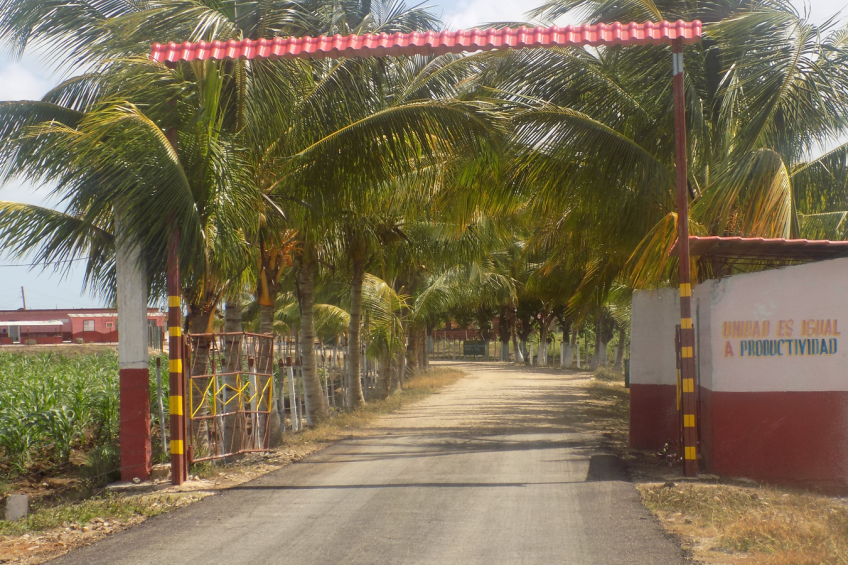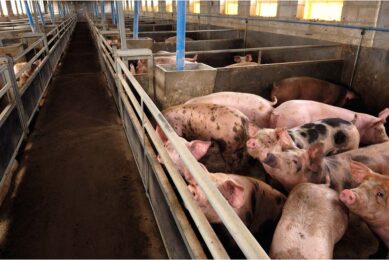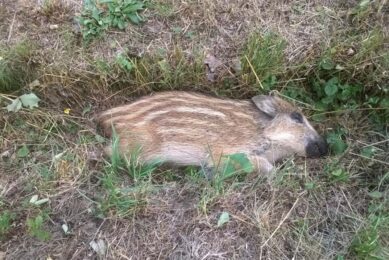Opportunity knocks for pigs as Cuba changes

For a long time, Cuba has been somewhat left aside on a global scale. Now the country is slowly changing, the country offers vast opportunities for both parties in the pig industry as well as for pork exporting countries. What does the country’s pig business currently look like?
Ask anyone about Cuba and you will get comments about cigars, rum cocktails and, maybe, Hemingway. History students have other connotations: the Kennedy-Castro-Khrushchev cold war missile crisis and the CIA-backed Bay of Pigs fiasco for example. There is a general air of intrigue and ignorance about the island. But a recent visit to Cuba and a review of the data and recent industry commentary suggests that there are opportunities for the pig industry in Cuba that should encourage any ambitious exporter from the pig meat supply chain to think hard about this Caribbean island.
Slowly but surely, Cuba is changing. And this will bring opportunities in the export trade for pig meat and also for suppliers of pig genetics, animal feed/additives and animal health. What are the drivers for change in this bastion of communist ideology that makes this market worth a second look?
First, a history lesson: before the fall of the Berlin Wall, Cuban agriculture was almost entirely dependent on the Soviet Union which purchased Cuban sugar at three times the world price in exchange for manufactured goods. After the collapse of the Soviet Union in the 90s, Cuban exports dropped by about 80% and this had a dramatic impact on the Cuban farm sector. Large state farms pretty much ground to a halt and the average caloric and protein intake of the population fell to about half its previous level. Ration coupons were one answer to this and they still exist. Cuban agriculture (and the Cuban people) survived this so-called ‘special period’ with the help of cheap oil from Venezuela, limited changes to the structure and operation of agricultural markets, and constant exhortations from the Castro regime.

Market-orientated reforms
The market-orientated reforms that were introduced are important. The majority of public land has been redistributed to small cooperatives, and private agricultural markets for farmers have been established which allows them to sell surplus products after meeting government quotas. There are now about 300 private agricultural cooperatives that are focused on pig production. But, despite some great examples of innovation and productivity by Cuban farmers, these changes have not been enough to take Cuban agriculture (and the economy) back to where it was in the pre-Soviet period – the proportion of people who are self-employed in Cuba, for example, is reported to be less than 10%. Nevertheless, the supply side of Cuban farming is evolving and this is one driver of change that creates opportunity for trade since its development will need technology, know-how and, for intensive livestock, feed inputs.
Another piece of the puzzle that is important when trying to understand Cuba’s foreign trade patterns is the precise position of the USA on sanctions. These sanctions were originally introduced in 1960 in response to the Fidel Castro-led revolution in Cuba a few years earlier and which had resulted in the confiscation of much US property. In 2000, US president Bill Clinton signed into law the Trade Sanctions Reform and Export Enhancement Act that tightened overall sanction terms and conditions but exempted US agricultural and medical products. Food exports were, and are, exempt but, importantly, US companies are required to make any trade with Cuba on a cash basis – no export credit is allowed. It’s also significant that the US trade embargo does not apply to third countries. The EU, for example, is free to trade with Cuba.
Finally, the recent visit of president Obama to Cuba and the re-opening of the US embassy in Havana signals a thaw in relations between the United States and Cuba which will, in due course, likely lead to improved opportunities to trade for US companies. Meanwhile, it is much easier for non-US firms to do business with Havana – especially since they can offer credit terms to Cuban importers – but the clock is ticking and Hillary Clinton has gone on record as saying it’s time the trade embargo was removed.
Agricultural imports
The Empresa Cubana Importadora de Alimentos (Alimport) controls the import of most of Cuba’s agricultural imports (+80%). Alimport is the only approved importer for key food products such as wheat, fresh fruits, vegetables and meat. Alimport is a state corporation, and its largest shareholder is the Ministry of Foreign Trade.
Imports supply about 80% of the annual food consumption in Cuba and large parts of this are poultry meat (US$200 million mainly from the US), maize (over US$200 million mainly from South America) and cereals (over US$200 million mainly from the EU). However, it appears that the USA’s self-imposed disadvantage on trade with Cuba has been noticed by other players in the export game. In 2009 US agricultural exports had a 42% share of the import market but this had dropped to 16% in 2014.

The EU (mainly Spain) and Canada are now the two biggest suppliers of pig meat to Cuba. In 2014 the relative proportions (by value) of pig meat sales from these countries were 58% and 37% respectively (and 4% from Chile). Total sales were less than US$15 million. But note the import quantity data from these sources: around 4,000 tonnes and 8,000 tonnes in the 2013 data and these figures imply that Europe is exporting its high value products – probably to the tourist trade. With recent domestic production of around 150,000 tonnes of pig meat each year the data suggest that the Cuban pig industry is performing rather better than other parts of Cuban agriculture in meeting domestic demand – at least in volume terms.
Cuban food market
The Cuban food market consists of 2 main segments: the domestic market, with the majority of its food purchases paid for in national pesos, and the hard currency market (convertible Cuban peso or CUC) which probably accounts for the food service (hotel, restaurant and CUC shops). State-owned food shops accept ration coupons and sell at low prices but the choice and quality of food is poor. Privately-owned shops have a larger variety of goods but only accept CUCs.
This might all seem rather depressing and not at all encouraging to any capitalist. But, although the average gross domestic product (GDP) per capita is very low (below Ecuador and just above Jamaica), there is growth in the tourist economy. In fact, tourism growth is about 4.5% per annum in Cuba – and this will make it a US$8 billion sector in 2014 – that’s 10% of the economy accounting for nearly half a million jobs.
By 2025 the contribution to GDP is expected to rise to US$12 billion. And some of this growth is feeding through to household incomes in Cuba with over US$20,000 incomes forecast to be available to more than 60% of the population in 2020.

Whatever the Castro regime says, it seems that the thin end of the wedge has arrived – as tourism grows and incomes (and general levels of service) improve the state-owned monopolies and companies will find it increasingly difficult to justify their existence. Nevermind the politics – Cubans, who claim that pork is their favourite menu item, will have more money in their pockets to spend in the years ahead. And, on the ground, on Cuban farms and in the shops, there is and will be a demand for products and services that are relevant to a modern pig meat supply chain and that can be supplied more easily (because of the credit issue) by non-US firms.
Cuba at a glance With about 11 million people and a surface of 110,860 km2, Cuba is the largest country in the Caribbean. Its climate is tropical, moderated by trade winds with a dry season, a rainy season and hurricanes. In total 60.3% is in use as agricultural land: arable land 33.8%, permanent crops 3.6% and pasture 22.9%. Forest takes up 27.3%, other land use 12.4%. The main agricultural products include sugar, tobacco, citrus, coffee, rice, potatoes, beans and livestock. About 18% of the workforce is in agriculture. The country’s population is nominally Roman Catholic with a life expectancy of 78 years. Havana is the capital (two million population); GDP per capita is about US$10,000/year. |











 Beheer
Beheer WP Admin
WP Admin  Bewerk bericht
Bewerk bericht